
Members: 
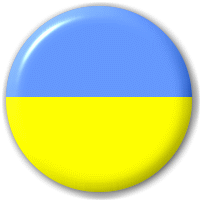



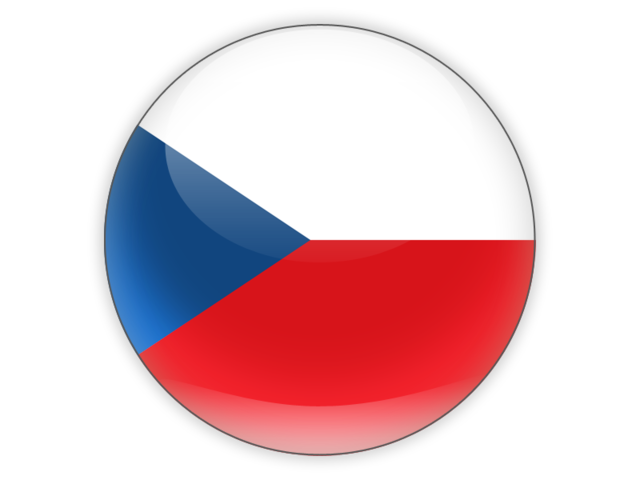
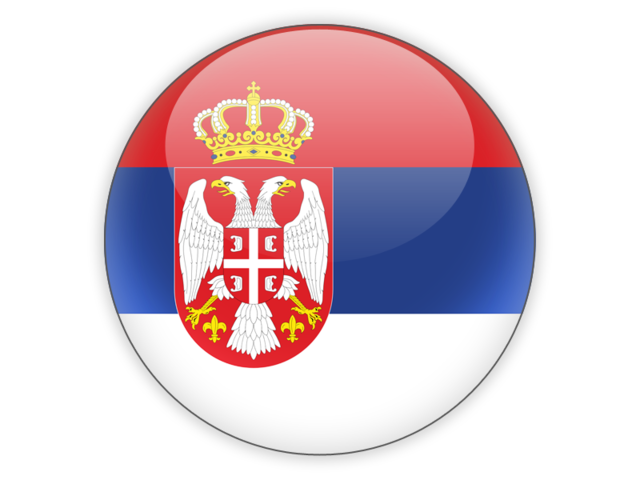

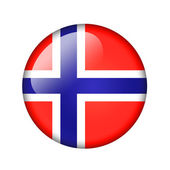
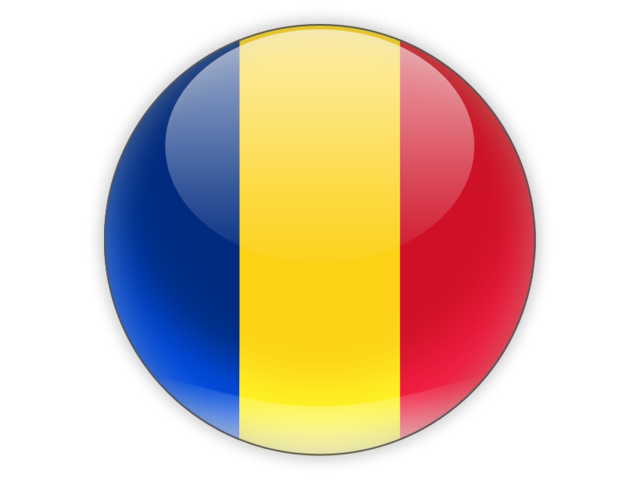
Dictionary: (all members)
 Картоф
Картоф  Кромпир
Кромпир  картопля /kartoplia/
картопля /kartoplia/  Potet
Potet Cartof
Cartof  kartopili/კარტოფილი
kartopili/კარტოფილი
 brambory
brambory  aardappelen/patatten
aardappelen/patatten
 A) Description, varieties, aroma, taste,...
A) Description, varieties, aroma, taste,...
A potato is a starchy brown or red-skinned growth of plant in the nightshade family. There are more than 600 varieties of potatoes. Each of these varieties fit into one of seven potato type categories: russet, white, red, yellow, blue/purple, fingerling and petite. The aroma that stems from cooking a baked potato promotes positive energies in the brain. They are not sweet unless you cook them with sugar, honey,...
 B) Real and Art Picture (+ information about the artist)
B) Real and Art Picture (+ information about the artist)
Information from Vadim Korchmeniuk
Potato Portraits. By Ginou Choueiri: Ginou Choueiri is Lebanese artist living in Beirut. She creates incredible potato-people using potatoes. The portraits were of family, friends, random people, politicians, pop stars. The artist uses potatoes because they have much in common with human face, their skin, their colors and like us.
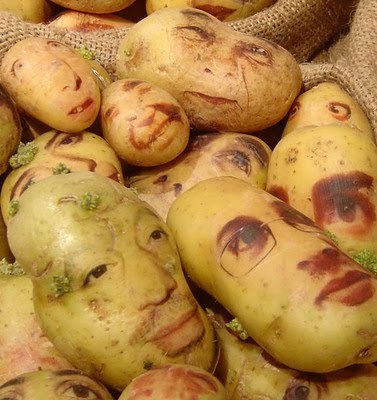
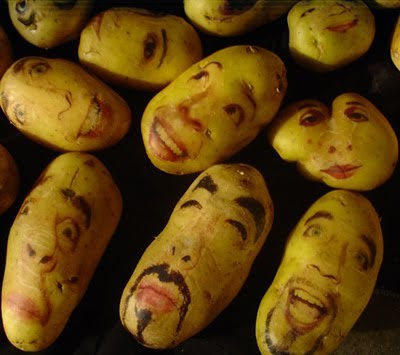
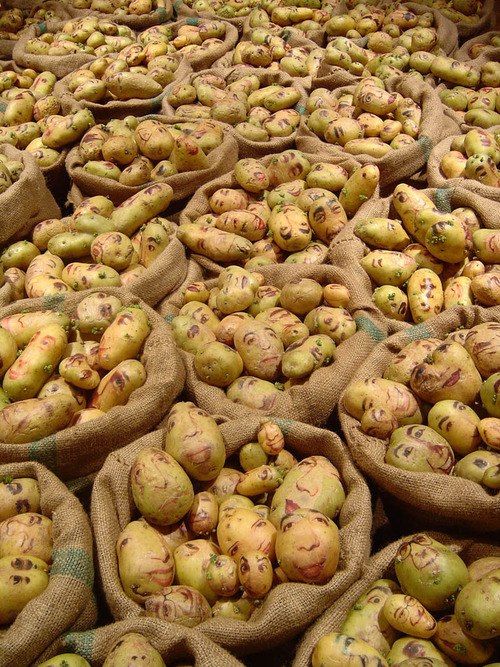
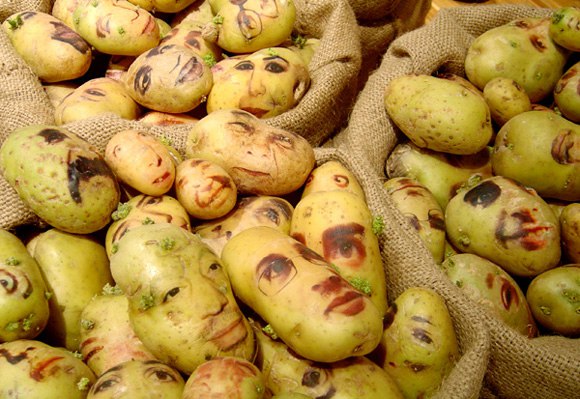
It is interesting that humans and potatoes have more in common than we’d like to thin
 +
+ C) In 10 steps how to grow potatoes
C) In 10 steps how to grow potatoes
How to grow potatoes in a bin
1: Choose a variety
Decide what variety of potato you want to grow.
2: Make a cut
Use a clean, sharp knife to cut each tuber into several sections, being sure each section contains at least one "eye" and an inch of flesh.
3: Let the rest cut potatoes for 24-48 days before planting. This rest period enables the cut area to callous over and helps keep soil-borne diseases from rotting the tuber before it can grow.
4: Find a home
Potatoes produce the best if they receive a minimum of six to eight hours of direct sun.
5: Set up the bin
Make a three- to four-foot-wide cylinder of box wire or chicken wire fencing. Line the inside of the wire bin with a layer of newspaper about ten sheets thick. Fill the bottom of the bin with a 50/50 blend of compost and potting soil.
6: Plant the taters
Put the cut seed potato sections on top of the compost / potting soil blend.
7: Cover the seed potatoes with potting soil / compost mix. Over the coming weeks, as the plants grow, fill the rest of the container little-by-little with the compost mix until it reaches the top.
8: Maintenance
Potatoes need to be consistently moist, are a daily dousing during summer's heat is an absolute must.
9: Digging your potatoes
The potatoes are ready to harvest after the plants turn brown and die completely. To harvest, open the wire cylinder and dig through the soil with your hands to uncover the spuds.
10. Cook them :)
(Team From Čačak, Serbia)
 D) In which countries worldwide is it grown (produced)? Cultivation history
D) In which countries worldwide is it grown (produced)? Cultivation history
 E) Import and export in Europe
E) Import and export in Europe
 F) Prices in Europe/ world
F) Prices in Europe/ world
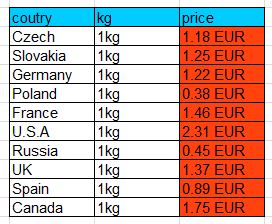
 +
+  G) Recipes with potatoes.
G) Recipes with potatoes.
Fish and Chips by Ruby Clish
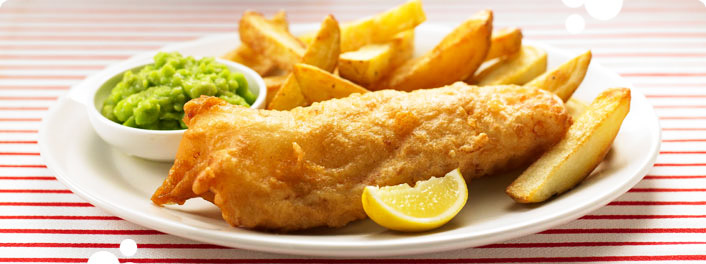
I went on Wikipedia, the Jamie Oliver Web site and took all the cookery books out of the LRC to find some Recipes for potatoes. In food tech we made hash browns, potato pancakes or Potato Gratin we made Leek and potato soup and every lunch time the kitchen serves baked potatoes, baked with Butter, or tuna or baked beans. Miss Middlemiss or Mr Bradley photographed our work.
We served visitors to the school “Bombay potatos ,Pakorasand Potato and Spinach curry (sag aloo) and I did not know which recipe to choose. In Italy everyone eats pasta, in China every meal is with rice and in France a meal without Bread is simply not a meal. Here in England we eat potatoes. They underpin every meal…..sometimes even breakfast, so which potato recipe to choose.
We went to Spain on an Erasmus trip and as soon as we got home I knew which one to choose…… Fish and Chips. In Zaragoza We went to Macdonalds and Burger king and get these skinny things called fries, in a Spanish restaurant we got a plate of patates, they were ok but too much salt and roasted in garlic and rosemary. No these are not chips.
So here we go…English Fish and Chips with Mushy peas. They are not healthy, so don’t eat these every day…not unless you want to end up the shape of a particularly round potato, but once in a while…especially among the seagulls and goths sitting on the sea front at Whitby with the smell of the sea in your nose……English Fish and Chips are as close to culinary heaven as you can get.
Ingredients
· Clean oil for deep-frying
· ½ teaspoon sea salt
· 1 teaspoon freshly ground black pepper
· 225 g nice white cod fillets , some people prefer Haddock but “meh !” last resort only for me.
· 225 g flour, plus extra for dusting
· 285 ml good beer, cold
· 3 heaped teaspoons baking powder
· 900 g potatoes, peeled and sliced into chips. (A chip is not a crisp, and it is not a French fry, it should be vaguely a cuboid about 1.5 cm by 1.5 cm by 6cm.Now don’t get bogged down with the dimensions, they are not exact, what I am saying is make them a decent size.
· FOR THE MUSHY PEAS
· 1 knob butter
· 4 handfuls podded peas
· 1 small handful fresh mint , leaves picked and chopped
· 1 squeeze lemon juice
Method
1. To make the mushy peas, put the butter in a pan with the peas and the chopped mint. Put the lid on and simmer for about 10 minutes. Add a squeeze of lemon juice and season with sea salt and black pepper. You can either mush the peas up in a food processor, or you can mash them by hand until they are stodgy, thick and perfect for dipping your fish into. Keep them warm while you cook your fish and chips.
2. Pour the sunflower oil into your deep fat fryer or a large frying pan and heat it to 190ºC. Mix the salt and pepper together and season the fish fillets on both sides. Whisk the flour, beer and baking powder together until nice and shiny. The texture should be like semi-whipped double cream (i.e. it should stick to whatever you're coating). Dust each fish fillet in a little of the extra flour, then dip into the batter and allow any excess to drip off. Holding one end, lower the fish into the oil one by one, carefully so you don't get splashed – it will depend on the size of your fryer how many fish you can do at once. Cook for 4 minutes or so, until the batter is golden and crisp.
3. Meanwhile, parboil your chips in salted boiling water for about 4 or 5 minutes until softened but still retaining their shape, then drain them in a colander and leave to steam completely dry. When all the moisture has disappeared, fry them in the oil that the fish were cooked in at 180ºC/350ºF until golden and crisp. While the chips are frying, you can place the fish on a baking tray and put them in the oven for a few minutes at 180ºC/350ºF/gas 4 to finish cooking. This way they will stay crisp while you finish off the chips. When they are done, drain them on kitchen paper, season with salt, and serve with the fish and mushy peas.
 H) Science experiment 1: Search a science experiment suitable for potatoes. Each of the responsible schools does the experiment, and compares the results. (you can invite every person in your group to do the experiment)
H) Science experiment 1: Search a science experiment suitable for potatoes. Each of the responsible schools does the experiment, and compares the results. (you can invite every person in your group to do the experiment)
More about Calorimetry and how you can measure calories in Potato chips read here:
http://www.chemistryhow.com/?q=book/export/html/50
 I) Science experiment 2: Foodpairing : potatoes in combination with another vegetable or fruit.
I) Science experiment 2: Foodpairing : potatoes in combination with another vegetable or fruit.

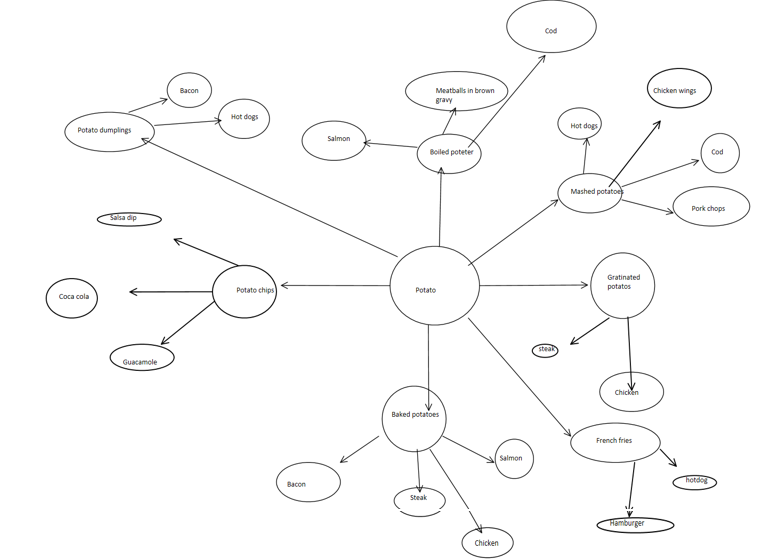
 J) Health benefits and Nutrional values:Melissa Baciu
J) Health benefits and Nutrional values:Melissa Baciu

Group 2 - Red Cabbage Group 3 - Spinach Group 4 - Carrots
Group 5 - Pumpkin Group 6- Lemon Group 7 - Grape/ Raisin Group 8 - Orange
Group 9 - Kiwi Group 10 - Banana Group 11 - Beans